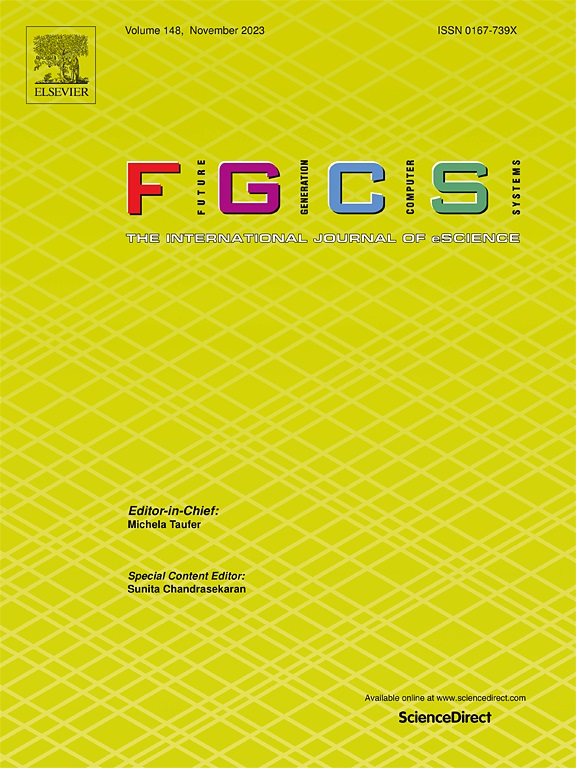Portability efficiency approach for calculating performance portability
IF 6.2
2区 计算机科学
Q1 COMPUTER SCIENCE, THEORY & METHODS
Future Generation Computer Systems-The International Journal of Escience
Pub Date : 2025-04-05
DOI:10.1016/j.future.2025.107826
引用次数: 0
Abstract
The emergence of heterogeneity in high-performance computing, which harnesses under one integrated system several platforms of different architectures, also led to the development of innovative cross-platform programming models. Along with the expectation that these models will yield computationally intensive performance, there is demand for them to provide a reasonable degree of performance portability. Therefore, new tools and metrics are being developed to measure and calculate the level of performance portability of applications and programming models.
The ultimate measure of performance portability is performance efficiency. Performance efficiency refers to the achieved performance as a fraction of some peak theoretical or practical baseline performance. Application efficiency approaches are the most popular and attractive performance efficiency measures among researchers because they are simple to measure and calculate. Unfortunately, the way they are used yields results that do not make sense, while violating one of the basic criteria that defines and characterizes the performance portability metrics.
In this paper, we demonstrate how researchers currently use application efficiency to calculate the performance portability of applications and explain why this method deviates from its original definition. Then, we show why the obtained results do not make sense and propose practical solutions that satisfy the definition and criteria of performance portability metrics.
Finally, we present a new performance efficiency approach called portability efficiency, which is immune to the shortcomings of application efficiency and substantially improves the aspect of portability when calculating performance portability.
计算性能可移植性的可移植性效率方法
高性能计算中异构性的出现也导致了创新的跨平台编程模型的发展,它在一个集成系统下利用了不同架构的几个平台。除了期望这些模型产生计算密集型性能外,还需要它们提供合理程度的性能可移植性。因此,正在开发新的工具和度量来度量和计算应用程序和编程模型的性能可移植性水平。性能可移植性的最终衡量标准是性能效率。性能效率是指作为理论或实际基准性能峰值的一部分而实现的性能。应用效率方法是最受研究人员欢迎和最具吸引力的性能效率度量方法,因为它易于测量和计算。不幸的是,使用它们的方式产生了没有意义的结果,同时违反了定义和表征性能可移植性指标的基本标准之一。在本文中,我们展示了研究人员目前如何使用应用程序效率来计算应用程序的性能可移植性,并解释了为什么这种方法偏离了最初的定义。然后,我们将说明为什么获得的结果没有意义,并提出满足性能可移植性指标定义和标准的实用解决方案。最后,我们提出了一种新的性能效率方法,称为可移植性效率,它不受应用程序效率的缺点的影响,在计算性能可移植性时大大提高了可移植性方面。
本文章由计算机程序翻译,如有差异,请以英文原文为准。
求助全文
约1分钟内获得全文
求助全文
来源期刊
CiteScore
19.90
自引率
2.70%
发文量
376
审稿时长
10.6 months
期刊介绍:
Computing infrastructures and systems are constantly evolving, resulting in increasingly complex and collaborative scientific applications. To cope with these advancements, there is a growing need for collaborative tools that can effectively map, control, and execute these applications.
Furthermore, with the explosion of Big Data, there is a requirement for innovative methods and infrastructures to collect, analyze, and derive meaningful insights from the vast amount of data generated. This necessitates the integration of computational and storage capabilities, databases, sensors, and human collaboration.
Future Generation Computer Systems aims to pioneer advancements in distributed systems, collaborative environments, high-performance computing, and Big Data analytics. It strives to stay at the forefront of developments in grids, clouds, and the Internet of Things (IoT) to effectively address the challenges posed by these wide-area, fully distributed sensing and computing systems.

 求助内容:
求助内容: 应助结果提醒方式:
应助结果提醒方式:


